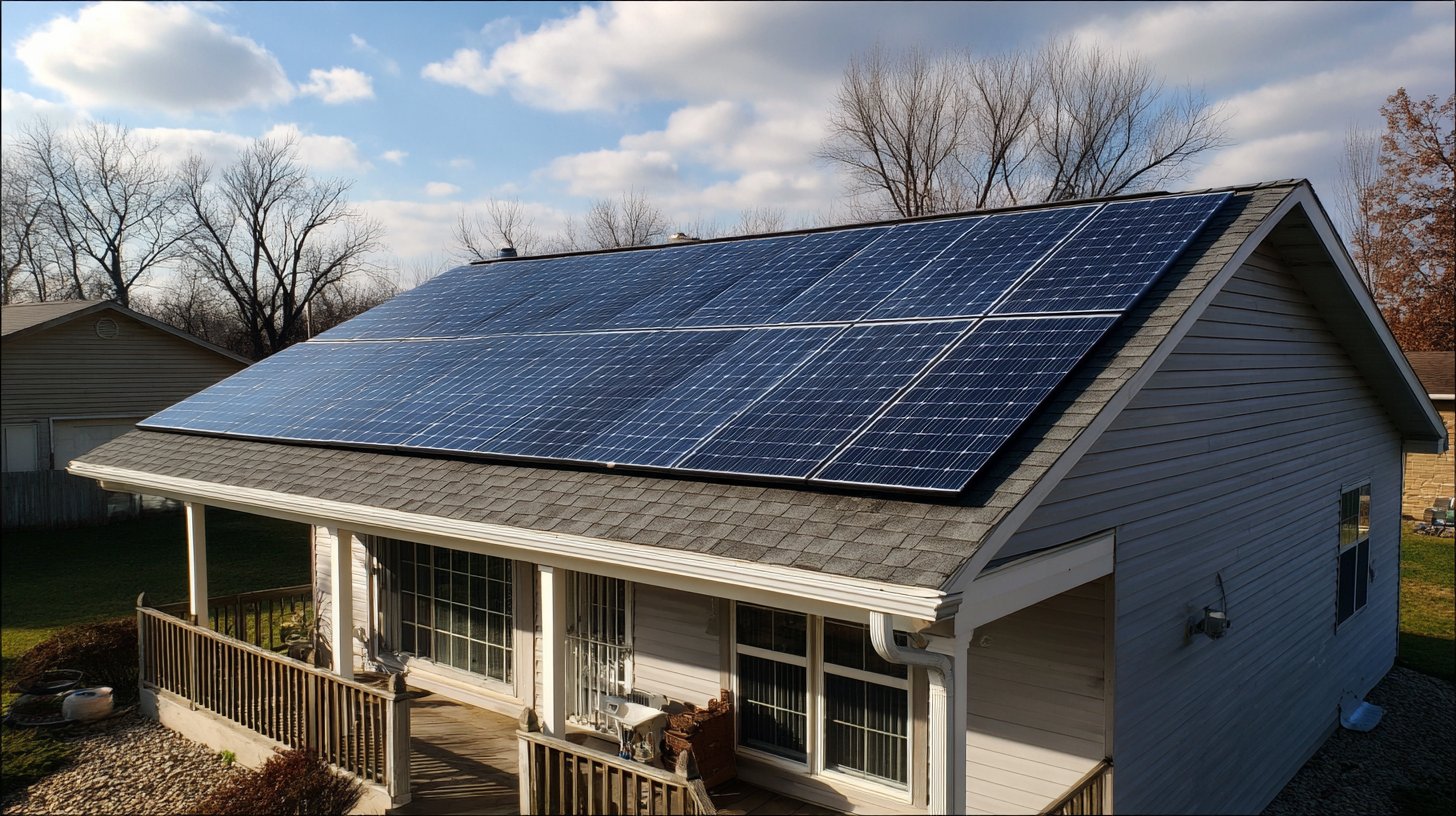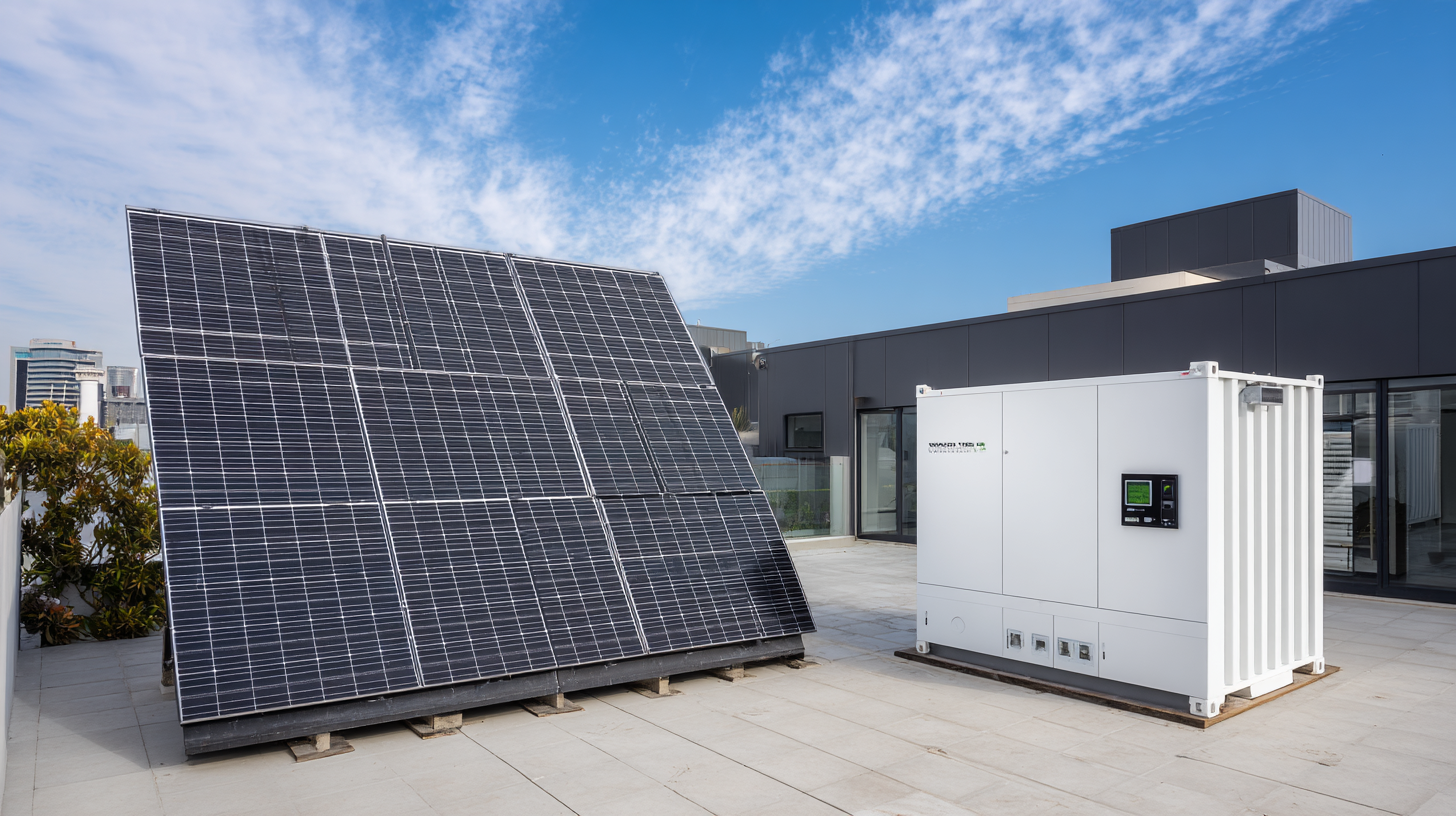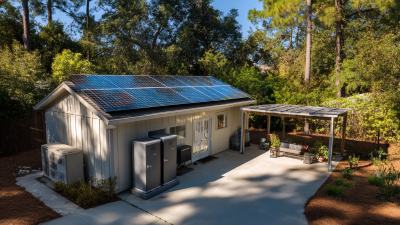MH Energy Your Better Solar and Energy Partner
Leave Your Message
MH Energy Your Better Solar and Energy Partner
As the global demand for sustainable energy solutions continues to rise, households are increasingly turning to innovative technologies to maximize energy efficiency. One such advancement is the integration of "Solar Panels Battery Storage", which not only harnesses renewable energy but also optimizes its usage. According to a report from the International Renewable Energy Agency (IRENA), households equipped with solar panels paired with battery storage can reduce energy costs by up to 70%. This remarkable reduction hinges on the ability to store excess solar energy for use during peak demand times, ultimately lowering reliance on the grid and minimizing utility bills.

The growth of solar energy has been propelled by declining costs and increased efficiency of solar panels, coupled with advancements in battery storage technology. A study by the National Renewable Energy Laboratory (NREL) reveals that the cost of lithium-ion battery storage has dropped by 85% since 2010, making it more accessible for residential applications. Furthermore, with incentives and rebates available in many regions, the initial investment in solar panels with battery storage has become increasingly economical, prompting a shift towards greener energy solutions.
In conclusion, the combination of solar panels and battery storage represents a pivotal step towards sustainable living, empowering households to take control of their energy consumption, significantly cut costs, and contribute to a cleaner environment. The trend is clear: investing in "Solar Panels Battery Storage" is not just an option; it’s a smart financial and environmental decision.
Solar panels with battery storage are transforming the way households manage energy consumption and costs. One of the primary benefits of this system is its ability to store excess energy generated during sunny days for use during peak demand times, such as evenings or cloudy days. This not only reduces reliance on the grid but also provides a safety net during power outages. By harnessing and storing solar energy, households can significantly lower their electricity bills, often achieving reductions of up to 70%.
Moreover, solar panels with battery storage contribute to environmental sustainability. By decreasing dependence on fossil fuels, these systems help lower carbon emissions and the overall carbon footprint of households. Additionally, many governments offer incentives and rebates for solar panel installation, further enhancing the financial viability of this investment. By embracing solar energy coupled with battery storage, households can enjoy substantial long-term savings while actively participating in the movement towards a greener planet.
Energy efficiency and cost reduction are increasingly crucial as households seek sustainable solutions to manage their energy consumption. Solar panels paired with battery storage systems can significantly lower expenses, with some reports indicating potential reductions of up to 70%. This dramatic decrease is attributed to the ability of these systems to harness sunlight effectively, storing energy for use during peak demand periods, thereby reducing reliance on the grid and associated energy costs. Integration of battery storage also enhances flexibility, allowing households to utilize renewable energy more efficiently.
In a broader context, ongoing trends in energy storage and management systems offer valuable insights into optimizing energy use across various applications. For instance, advances in thermal energy storage (TES) technologies enable better management of energy loads, contributing to overall system efficiency and sustainability. Similarly, performance incentive mechanisms play a vital role in promoting energy-efficient practices across different sectors. By evaluating these mechanisms and their impacts, policymakers can drive initiatives that not only reduce costs but also enhance energy efficiency at both household and community levels. The proactive pursuit of these technologies and practices illustrates a collective step towards a more sustainable energy future.
The rising cost of energy is a pressing issue for households, with reports indicating that Australian power bills could rise dramatically in the coming years. This situation underscores the critical role of renewable energy, particularly solar power, in mitigating household expenses. By incorporating solar panels with battery storage, families can significantly cut their electricity costs, with some estimates suggesting savings of up to 70%. This transition not only provides immediate financial relief but also promotes long-term sustainability and energy independence.
Moreover, the benefits of solar energy extend beyond just cost savings. Installing rooftop solar panels can enable households to withstand power outages, ensuring a stable energy supply during disruptions. With government initiatives encouraging the adoption of solar technologies, families are increasingly empowered to take control of their energy consumption. As the shift towards renewable energy accelerates, the cumulative impact on household budgets and the environment will become increasingly evident, making solar energy a vital component in the fight against rising energy costs.
This bar chart illustrates the significant reduction in annual energy costs for households before and after the installation of solar panels with battery storage. As shown, energy costs decreased from $3000 to $900, resulting in a 70% reduction in household expenses.
Solar energy has emerged as a pivotal solution for households aiming to minimize energy expenses, particularly when paired with battery storage systems. A significant factor contributing to the potential 70% cost reduction associated with solar systems is the decreasing cost of solar photovoltaic (PV) technology. According to recent studies, the price of solar panels has plummeted by nearly 90% over the last decade, making it more accessible for homeowners. As countries like China continue to lead in renewable capacity, the ripple effect on global supply chains helps lower costs further, ensuring that consumers benefit from affordable and sustainable energy sources.
Additionally, battery storage technology enhances the financial viability of solar installations. By storing excess energy for use during peak demand times, households can optimize their energy consumption and avoid high utility rates. Reports indicate that integrating solar with battery systems can decrease dependency on the grid, thus significantly cutting electricity bills. The Clean Power 2030 Action Plan outlines a vision for reducing household energy expenditures through such innovations, indicating that as more households adopt these technologies, overall energy costs will continue to decline, making solar solutions a smart investment for the future.

As households increasingly seek to reduce energy expenses, a comparative analysis between traditional energy sources and solar solutions reveals significant differences in cost-effectiveness and sustainability. According to the U.S. Energy Information Administration (EIA), the average American household spends approximately $2,000 annually on energy expenses, with around 70% of that amount attributed to electricity. Conversely, households that adopt solar panels, coupled with battery storage systems, can experience a dramatic reduction in energy costs, reportedly saving up to 70% on their utility bills.

Furthermore, traditional energy sources such as coal and natural gas not only contribute to economic strain but also pose environmental challenges. The International Renewable Energy Agency (IRENA) indicates that transitioning to solar energy can minimize carbon footprints, allowing households to reduce greenhouse gas emissions by as much as 80% over a system's lifecycle. Additionally, solar technology has become increasingly accessible, with the cost of solar photovoltaic (PV) systems decreasing by nearly 90% over the past decade. This trend underscores the financial and environmental advantages of investing in solar solutions over conventional energy sources.






